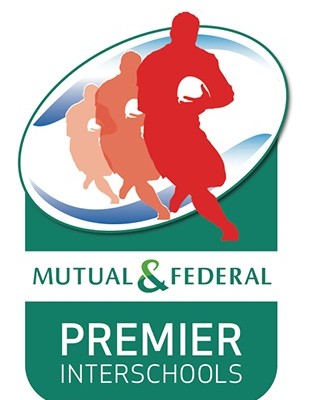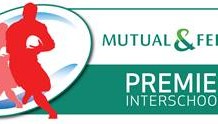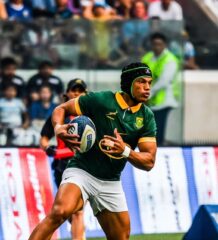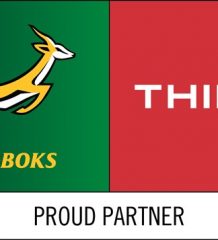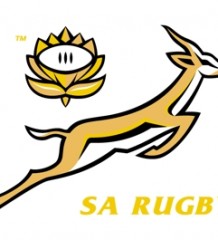Mutual & Federal Premier Interschools KES vs Jeppe Derby
Mutual & Federal Premier Interschools is a series of 12 matches, which feature the highest profile and most traditional interschool rugby rivalries from South Africa’s top rugby schools, which are broadcast live on SuperSport from April to August.
Schoolboy rugby has served as one of the cornerstones of domestic rugby dating back more than a century, and true to its slogan “Honouring Heritage. Playing for the Future”, Mutual & Federal Premier Interschools is about history, heritage and tradition. The series, now in its second year, is expected to grow even stronger.
The Mutual & Federal Premier Interschools stories are further captured in 12 Preview shows, which preview all the games and provide historical overviews of these traditional schools and highlight other academic, cultural and sporting achievements.
Jeppe takes on KES for their annual Interschool’s derby at Jeppe’s famous Jake White Field on Saturday, 26 July at 14:05.
The match will be televised live on SuperSport channel SS1 / SS1HD
The Preview Show will air on Wednesday evening, 23 July 2014 at 18:45 on SuperSport HD
|
Schedule Date
|
Series
|
Season
|
Episode
|
Schedule Time
|
Duration
|
Schedule End Time
|
Channel
|
Status
|
|
Mutual & Federal Premier Interschools
|
2014
|
Eps. 7 – Jeppe vs KES
|
SuperSport HD
|
P
|
||||
|
Mutual & Federal Premier Interschools
|
2014
|
Eps. 7 – Jeppe vs KES
|
SuperSport HD
|
R
|
||||
|
Mutual & Federal Premier Interschools
|
2014
|
Eps. 7 – Jeppe vs KES
|
SuperSport HD
|
R
|
||||
|
Mutual & Federal Premier Interschools
|
2014
|
Eps. 7 – Jeppe vs KES
|
SuperSport HD
|
R
|
||||
|
Mutual & Federal Premier Interschools
|
2014
|
Eps. 7 – Jeppe vs KES
|
SuperSport HD
|
R
|
||||
|
Mutual & Federal Premier Interschools
|
2014
|
Eps. 7 – Jeppe vs KES
|
SuperSport HD
|
R
|
||||
|
Mutual & Federal Premier Interschools
|
2014
|
Eps. 7 – Jeppe vs KES
|
SuperSport HD
|
R
|
||||
|
Mutual & Federal Premier Interschools
|
2014
|
Eps. 7A – Jeppe vs KES
|
SuperSport Select SA
|
P
|
||||
|
Mutual & Federal Premier Interschools
|
2014
|
Eps. 7A – Jeppe vs KES
|
SuperSport HD
|
P
|
For all results, fixtures, videos, photos and information visit the new Premier Interschools website at www.premierinterschools.co.za
All stats provided by Nelio De Sa from www.RUGBY15.co.za
Follow Interschools on:
Facebook: www.facebook.com/Premierinterschools
Twitter: @PremierSchools
Historic Overview
Schoolboy Rugby doesn’t get much bigger in Johannesburg than a KES vs Jeppe rugby match. The Reds vs Black n Whites…After Saturday 26th July, we will know if Johannesburg will be painted red or monochrome!
Jeppe is aiming for a rare “three-in-a-row” against KES as they only achieved it twice before. Once in the 50’s and once in the early 90’s. They surprised KES in 2012 with guts and glory rugby and pulled off a remarkable win against a very strong KES team. They lived up to their school motto “Nothing is too difficult for the brave”. Last year, KES had home ground advantage but lost in a very close encounter 15-12.
This is what Premier Interschools is all about, playing against your oldest and fiercest rivals and every player giving his all to win for his school?
Results down the years:
1935: KES won 20-0
1936: KES won 26-0
1937: KES won 12-3
1938: Jeppe won 14-3
1939: KES won 9-6
1940: KES won 10-0
1941: KES won 8-3
1942: KES won 9-3
1943: KES won 11-3
1944: Jeppe won 11-9
1944: KES won 16-10
1945: Draw 3-3
1946: Jeppe won 9-3
1947: KES won 8-6
1948: Jeppe won 11-3
1949: Draw 0-0
1950: KES won 12-6
1951: Jeppe won 17-3
1952: Jeppe won 22-8
1953: Jeppe won 8-6
1954: Jeppe won 20-6
1955: Jeppe won 14-0
1956: KES won 13-3
1957: Draw 0-0
1958: KES won 16-14
1959: Jeppe won 16-8
1960: KES won 8-6
1961: KES won 12-11
1962: KES won 17-5
1963: Jeppe won 18-0
1964: KES won 22-19
1965: KES won 12-11
1966: KES won 6-0
1967: Jeppe won 16-9
1968: KES won 15-9
1969: KES won 9-3
1970: Draw 5-5
1971: KES won 12-5
1972: KES won 37-0
1973: KES won 15-10
1974: KES won 39-3
1975: KES won 28-3
1976: KES won 57-0
1977: KES won 51-3
1978: KES won 39-6
1979: KES won 22-20
1980: KES won 26-3
1981: KES won 22-10
1982: KES won 18-6
1983: Jeppe won 17-10
1984: KES won 18-15
1985: Jeppe won 18-13
1986: KES won 36-4
1987: KES won 18-10
1988: KES won 17-9
1989: KES won 21-18
1990: KES won 16-3
1990: Jeppe won 12-9
1991: Jeppe won 9-6
1992: Jeppe won 21-0
1993: KES won 22-21
1994: KES won 22-20
1995: KES won 24-22
1996: Jeppe won 12-5
1997: KES won 38-15
1998: KES won 23-3
1999: KES won 30-15
2000: KES won 27-9
2001: Draw 15-15
2002: KES won 38-3
2002: Jeppe won 20-14
2003: KES won 27-7
2004: KES won 12-0
2005: KES won 30-7
2006: KES won 12-0
2007: KES won 40-18
2008: KES won 24-14
2009: KES won 65-10
2010: Jeppe won 17-13
2011: KES won 36-15
2012: Jeppe won 28-13
2013: Jeppe won 15-12
2014 Season
The 2014 season started on a high for KES when they beat old rivals Pretoria Boys High 20-17 in a tightly contested match. They lost a bit of momentum when they were defeated in their next match by a very strong Selborne team 20-11. After that they went on a 3-match winning streak beating DHS, St Johns and Rondebosch Boys. They then started an up-and-down trend first losing to Queens, and then winning against Northwood before going down heavily to Paul Roos at Wildeklawer 67-0. They recovered remarkably after that defeat to beat a strong Noord-Kaap 2 days later 17-12.
After the Easter Festivals and Wildeklawer they started their more traditional fixtures with an excellent 25 all draw against Maritzburg College. Their next match was the Premier Interschools game televised against Affies where they flattered to deceive and lost 10-38 in a very one sided match dominated by Affies. A Week later they went down to Westville Boys high 23-34 probably still suffering from the hammering they took from Affies. They turned their last three matches nicely around winning all three against St Albans, Pretoria Boys High and St Stithians. They should be going into the Jeppe match full of confidence.
Willem du Plessis was KES’s only Craven Week representative in 2014 taking up the reserve hooker spot for the Golden Lions team.
Jeppe also started their season on a winning streak beating St Johns and an always-competitive Daniel Pienaar in their first two matches. They then came across a very good Glenwood outfit that beat them 10-22, which in retrospect, considering the 2014 season, is not a bad result. They also recently lost to a strong Paarl Boys side at the St Johns festivals, running the boys from Paarl close with a 5-12 score line. They have very similar results to KES against common opposition, but Jeppe gave Affies a much tougher fight before going down 11-23 to the Pretoria school.
King Edward VII profile
In 1902, when the Boer War came to an end, there was an urgent need for schools in the Transvaal. The Milner Administration, in search of suitable buildings in which to establish temporary classrooms, found a vacant cigar factory in Johannesburg, on the corner of Gold and Kerk Streets, which was chosen as venue for “The Government High School for Boys”, also known as the “Johannesburg High School for Boys”. Thus was born a school that ultimately became the King Edward VII School.
It grew so rapidly that in 1904 it was moved to Barnato Park where it was established in the mansion that originally had been designed for the mining millionaire Barney Barnato, who died at sea in 1897. At its new location, it was referenced as “Johannesburg College” but within seven years, the premises were deemed inadequate and in 1911 the school was moved to its present site on the Houghton Ridge. Here, new buildings had been impressively designed and specifically constructed for the school. Less than a year after the founding the Union of South Africa, the death of Queen Victoria’s eldest son and successor, Edward VII, led to the proposal that the institution’s name be changed to honour his memory, thus establishing the appellation, King Edward VII School.
The school remains public, with an enrolment of over 1,000 boys from grades 8 to 12 (ages 13 to 18). King Edward VII Preparatory School, which is situated adjacent to the High School and shares its grounds, caters to boys from grades 0 to 7. In 2011, the school won the inaugural South African National Schools Moot Court Competition
Nearly a century old, the school buildings of King Edward retain their impressive appearance and are considered national monuments. These include the school hall, the back facade, the front facade, the lecture theatre and library wing, the memorial wing and the cenotaph in the main quad.
They are also fully committed to fulfil their duty to the school and offer newly renovated classes, a modern and renovated lecture hall, one of the biggest libraries in Gauteng, three state-of-the-art IT centres with 110 computer stations, art centres, a museum, historic hall and theatre built by the Dramatic Society in previous decades
Rugby at KES
Shortly after Desmond Davis, an Association Football enthusiast, retired in March 1931, plans were laid by his successor and “father” of all sport at King Edward, “Robbie” Robinson, to start rugby at the school in the 1932 season. To this end, he enlisted the help of a “god-father” in the person of Eric F.K. Tucker. He persuaded the Transvaal Rugby Union to level and grass an ugly dusty slope on the School grounds to transform it into two rugby fields to be available for the 1932 season.
On 27 April 1932 the school’s fields were opened when the Chairman of the Governing Body and ex-Matie, H.J. Hofmeyr, kicked off the first ball. On that occasion, Frank Robinson expressed the wish that King Edward boys would repay the Transvaal Rugby Union in due course by reproducing in senior rugby, what they had learned while at school.
As early as 1931 the school rugby colours had been decided. For the 1st XV cardinal red jerseys with white collars and a badge, white pants and red and white ringed socks. The rest of the school were to play in red, white and green ringed jerseys with dark blue pants and black stockings with red and white tops. And so it has continued to this day with the obvious change to the socks and to white pants for the whole school. It was only in 1935 that the badge was incorporated.
Bruce Macdonald, who left the school in 1939, was selected for Transvaal and is the first ex-K.E.S. boy to have played in a Currie Cup final in 1947. The 1956 side produced two provincial players via. A. Miller and J. Faber, while A.H. Bladen was a member of the 1961 side and was eventually selected for the Junior Springboks. Norman Picker’s (later a Transvaal player) 1968 side with a 100% record after 17 games played. A few other names from past decades that played representative rugby are: L. Barnard, G. Lawless, E. van der Merwe, R. Keil, S. Marot and D. Malherbe
SA SCHOOL AND ACADEMY PLAYERS
1974 LEE BARNARD SA SCHOOLS
1974 S CARTY SA SCHOOLS
1997 M. KALI SA ACADEMY
1997&8 JOE VAN NIEKERK SA SCHOOLS
2008 W MJEKEVU SA SCHOOLS
2009 S NTUBENI SA SCHOOLS
2011 M. MARX SA ACADEMY
2011 S MAYEKISO SA ACADEMY
2012 M MARX SA SCHOOLS
There are many old boys plying their trade as rugby players, especially recently in the U19 and U21 provincial tournament. However in the senior set up we have: L Ruiters (Cheetahs Vodacom Cup), F Ntelki (EP KIngs), W Mjekevu ( Perpignan), J Saunders (Saracens), M Marx (Lions Vodacom/Super Rugby, SA u20), C Brink (Lions Vodacom, SA u20), D Smith (Lions Vodacom), S Ntubeni (DHL Stormers), B Habana (DHL Stormers & Springboks) & J Van Niekerk (Toulon).
The following players from KES represented South Africa on the rugby field.
Joe Van Niekerk (2001 – 2008); Bryan Habana (2004 – Present)
The latter is arguably KES’s most famous rugby player. He currently holds the record for the most tries scored in Bok tests, as well as equalling the record for most tries scored at a Rugby World Cup tournament, which he achieved in the 2007 RWC in France.
The school currently has 27 sides, which means we have an average of 405 boys playing each week. The U14 age group this year has up to an “F” side, which is great in terms of depth for the school but more importantly all of these boys are enjoying the benefits of teamwork as well as the camaraderie that is associated with a sport like rugby. It is vital to us that all the boys get the opportunity to play but it is also important to us that we do well in rugby. We compete against very tough opponents and traditionally have great rivalries with many top all-boys school within and outside the provincial boundaries. At the moment, we are privileged to play annually against some great schools such as Pretoria Boys’, Parktown Boys’, Jeppe Boys’, Westville Boys’, Maritzburg College, St John’s College, St Stithians College and St Albans College. The boys are therefore exposed to top class opponents all the time and that is why we believe that many of our boys are gaining provincial school and SA school selection recently.
The two most recent success stories are old boys Malcom Marx and Cyle Brink who was both selected in the South African u/20 World Cup squad for the 2014 Junior World Cup being held in New Zealand.
Jeppe High School for Boys Profile
Jeppe High School for Boys is a public secondary school is located in Kensington, a suburb of Johannesburg, Gauteng, South Africa, one of the 23 Milner Schools. The school’s motto is the Latin Forti nihil difficilius, meaning “Nothing is too difficult for the brave”, also translated as “For the brave, nothing is too difficult”. Jeppe High School for Boys is the oldest known school in Johannesburg.
The school was founded as Saint Michael’s School in 1890 in Johannesburg, four years after the gold rush that founded that city. In 1896 it was bought by the Witwatersrand Council for Education, which was concerned with the education of English speakers in the Dutch-speaking South African Republic. In 1897 the school was renamed Jeppestown Grammar School after the German-born philanthropist, Sir Julius Jeppe. The school was closed during the Second Boer War but was reopened soon after by the educationist Alfred Milner, 1st Viscount Milner, and renamed Jeppe High School for Boys and Girls. In 1911 the school moved to its present site in the suburb of Kensington. In 1919, a separate girls’ school, Jeppe High School for Girls, was formed. Originally playing soccer, it switched to rugby union in the 1930s, and has since produced four Springbok internationals and one international coach. It also has a preparatory school.
Jeppe High School for Boys has beautiful stone buildings with a prominent facade. The Payne Hall, a stone building with a largely wooden interior, has been declared a National Monument. Within the school is another National Monument; a War Memorial dedicated to those who died in the First World War.
As noted in the book Historic Schools of South Africa: “perhaps more than any other Johannesburg school, it reflects the history and changing character of the city and has always been a melting pot for children of diverse socioeconomic, language and cultural backgrounds”.
Recognised as one of South Africa’s Top 20 boys schools, the defining characteristics of the men it produces often centre on the principles of loyalty, honour and friendship. Jeppe’s ability to shape the characters of boys into men is its greatest success.
Every old school has a powerful narrative that defines its core identity. For Jeppe, it is the story of the Jackson clan, whose father arrived at the door of the school many years ago, an orphan from Rhodesia who was shunned to Durban and then to Johannesburg, with nothing at all. The school turned an orphan into a decent man, whose sons also attended Jeppe. It is a story of how a poor boy can become an established man.
It is the story of Jeppe. Its website declares proudly what no other English school has as a line of distinction: “Jeppe has never been an elitist school.” The Theo Jackson Scholarship Fund supports poor boys; sports and academics are not that important, says the fund. Character is. That story of struggle and the virtue of character run like a golden thread through the history of Johannesburg’s oldest high school since the 1890s, when it experienced financial difficulties after the school was closed for the duration of the Anglo-Boer War.
It is that badge of struggle, that nothing comes easily, that character is everything, that is written into the Latin motto.
Rugby at Jeppe
Jeppe High School for Boys has had a proud rugby tradition. Sportsmanship was stressed and results throughout the divisions were good. An unbeaten junior team is a common occurrence but the Jeppe 1st XV’s have only had three unbeaten teams. In 1954, 1959 and 1967, although in many years they have lost only one match. The First XV field is named the Collard Field after Mr Jack Collard, who coached the First XV from 1942 to 1960, but without a doubt the most famous Jeppe old boy and coach has been Jake White, his fame going far beyond the Collard Field to the great grounds of the world. He coached Jeppe to successful years from 1989 to 1994.
Jake White was born in Johannesburg and attended Jeppe High School for Boys where he played in the First XV. He began his coaching career as a high school rugby coach at Parktown Boys’ High School’s First XV before returning to his old school as a teacher and as coach of the school’s First XV. White’s success with the school team resulted in him being appointed as provincial schools coach. Later he coached various under-19 and under-21 sides before assisting Springbok squad preparations by doing video analysis for them. By this time he was well known for his technical prowess in rugby circles, and he lived up to his reputation by coaching the under-21 Springbok side to a victory in the U-21 Rugby Union World Cup in 2002.
White was appointed as head coach of the national team in early 2004 when South African rugby was in turmoil following their poor performance at the 2003 World Cup. He coached them up to 2007 culminating in South Africa’s 2nd Rugby World Cup win.
Some notable achievements by White:
-Winning the Tri Nations (2004)
-Winning the World Cup (2007)
-Taking South Africa from 6th on the IRB World Rankings (2003) to 1st (2007)
-IRB International Coach of the Year (2004, 2007)
-Biggest score ever achieved by a Springbok side (134-3 against Uruguay in 2005)
-First home series win against France since 1975
-First victory over the All Blacks at Newlands since 1976
-Consecutive wins against Australia and New Zealand for the first time since 1998
-Most successful South African team at home in the history of Springbok rugby.
-First South African team to beat Australia 3 times in the same year since 1971
-First South African team to beat Australia in Australia since 1998
A total of four Jeppe Old Boys have played for South Africa, namely Des Sinclair and Wilf Rosenberg, both centres and contemporaries in the Springbok team, and James Dalton and Brent Moyle, who were contemporaries in the Jeppe front row.
Referee Rasta Rasivhenge is an old Jeppe boy and maths teacher who is currently making a name for himself on the 7’s circuit as one of the quickest men on the field, and that includes players as well!
A Real Jeppe Success Story!
Sibusiso Nkosi (18) from Barberton and Robert de Mornay(16) of Middelburg joined Jeppe after receiving the Clive Hatch Education Scholarship in 2011 and 2012 respectively. The teenagers have risen from the dust of the townships to become two of the school’s top rugby players. Nkosi, a grade 12 pupil, played wing for the school’s first team in the 2013 and 2014 season, and was an important member of the u/18 Golden Lions team that narrowly lost to Western Province in the final of the Coca-Cola Craven Week in 2013 and again represented the Lions at Cravenweek in 2014. Nkosi achieved full rugby colours from the school at the end of the 2013 season, has excelled on the athletics field and is an above average academic achiever.
De Mornay represents the Jeppe under 16A team which lost just one game in 2013 as u/15’s, and scored five tries, including the only try in the losing effort against Afrikaanse Hoer Seunskool (Affies). The current Jeppe u16A team is rated No 1 in SA. De Mornay also represented the Golden Lions Academy team at the recent Grant Khomo week held in Durban.
Jeppe Old Boy and former Provincial Leader of the Democratic Alliance in Mpumalanga, Clive Hatch, assists the scholarship fund which has been established to assist financially disadvantaged boys from Mpumalanga, who despite difficult and challenging circumstances have shown a will to succeed. Each scholarship fully covers tuition fees for each academic year, which for five years of high school education for boarders at Jeppe, costs about R325 000.
“This has been an incredibly selfless and generous act by Mr Hatch. This is not just a once-off act of kindness but a huge commitment in that it provides an entire education for these boys,” said Jeppe Vice-Principal Dale Jackson.
“Sibusiso and Robert are now repaying this generosity magnificently through their academic and sporting achievements,” said Jackson.
Related Posts
« Folau back for Brumbies Semi-Final showdown Paarl Boys High 1st XV to take on Bishops »


